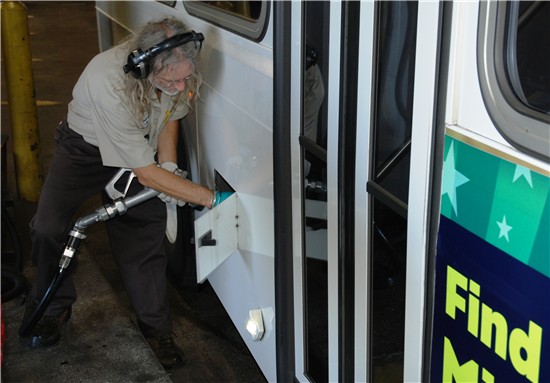 Metro Transit buses are getting around on a cleaner and less costly fuel this summer.
Metro Transit buses are getting around on a cleaner and less costly fuel this summer.
Taking advantage of favorable pricing, the entire Metro Transit bus fleet ran on a 20 percent blend of soy-based biodiesel for the first time in July. Biodiesel has been in use since 2009 but buses typically run on a 5 percent blend.
While the amount of biodiesel in use will fluctuate based on pricing and weather – higher blends do not work as well in cold climates – the recent shift underscores Metro Transit’s commitment to sustainability and innovation.
Biodiesel produces fewer harmful emissions such as CO2 and carbon monoxide and is sourced largely from soy crops grown locally in Minnesota.
“For us to have 20 percent of our fuel be renewable I think is just fantastic,” said Steve Kaari, a Metro Transit fleet supervisor who tracks the biodiesel market.
For an agency that uses nearly 7 million gallons of fuel a year, the shift also has a noticeable impact on costs.
Compared to 5 percent blends, the use of higher biodiesel has saved tens of thousands of dollars since July 1. At one point in July, a gallon of 20 percent blended biodiesel was roughly 32-cents less than the 5 percent blend.
“We really support going green but it’s also about being economically viable,” Kaari said.
Metro Transit’s biodiesel use has some positive impacts beyond the agency, too. By using higher blends, the agency gets a better understanding of how components respond to the fuel and can share findings with the broader transportation community, enabling more technical improvements.
While the logistics can be more challenging, Kaari said the combined benefits of using biodiesel are good reason to continue running buses on it in the future.
“If all the criteria are met, we’re going to use it,” he said. “It’s a complex thing but it’s a positive thing.”
> Go Greener with Metro Transit